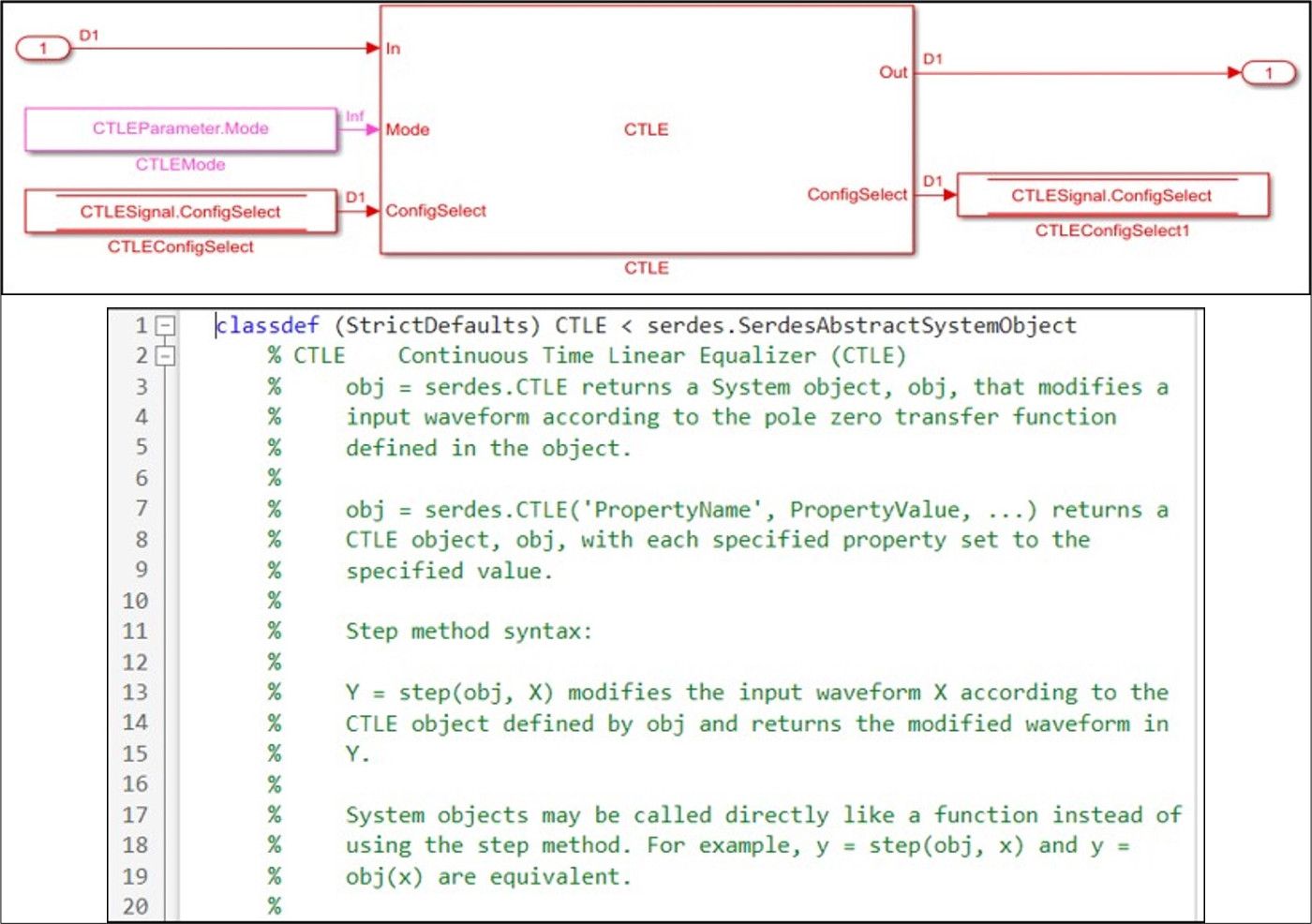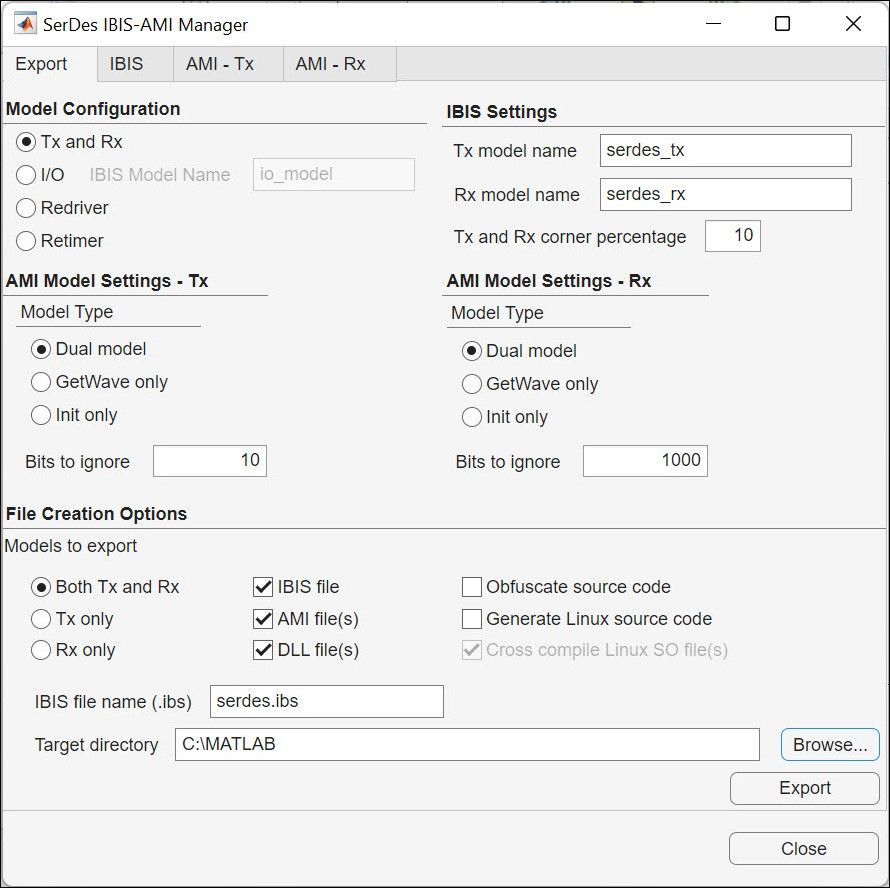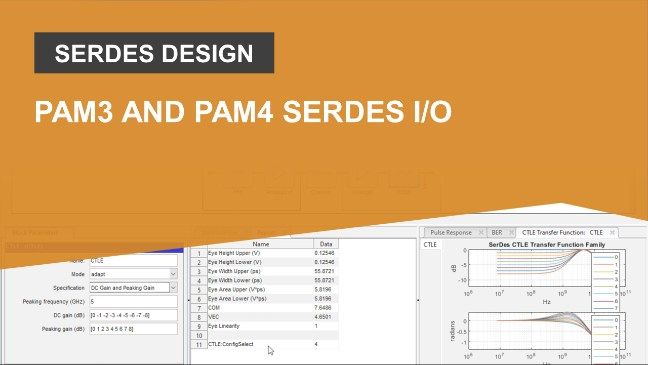What Is a SerDes?
A SerDes, or serializer/deserializer, consists of two integrated circuits and is used in high-speed communications to reduce the number of inputs and outputs on an ASIC or FPGA. In essence, these circuits convert parallel data into a serialized format, transmit it over a distance, and then revert it back to its original parallel form at the destination. SerDes circuits are vital to enabling the rapid movement of data in systems, such as telecommunications networks, consumer electronics, and in-vehicle networking systems, very important in our increasingly connected world.
A serializer takes data from a parallel bus and sends it over a high-speed serial link to be deserialized at the other end.
SerDes technology involves complex processes such as encoding, transmitting, receiving, and decoding high-speed serial data, with equalization applied at both the transmitter and receiver to enhance signal integrity. Design and verification of SerDes systems are challenging due to the need to manage high data rates, ensure signal integrity across complex channels, implement sophisticated equalization techniques, minimize jitter, and manage power efficiency and adhere to industry standards. These tasks are further complicated by the demands of higher-order modulation schemes, technology scaling, and the necessity for interoperability with other vendors’ IP, requiring a multidisciplinary approach and simulation and testing methodologies.
MATLAB® and Simulink® offer a simulation environment where engineers can model, analyze, and optimize SerDes systems. With these tools, engineers can perform time-domain and frequency-domain analyses, design custom modulation schemes, and import S-parameters to test the impact of channel impairments on system performance before moving to hardware prototypes.
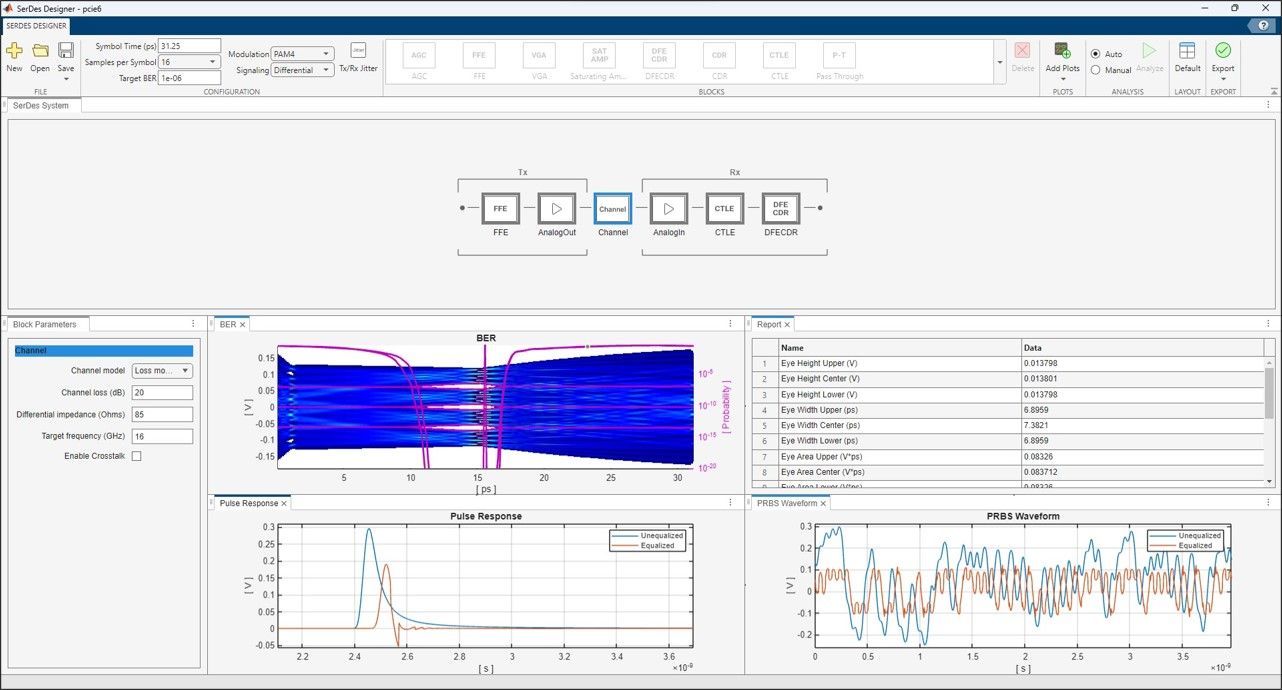
SerDes Designer app showing PCIe 6 simulation results, including a PAM4 eye diagram, an equalized and unequalized pulse response, a PRBS waveform, and a report.
Evolution of SerDes Technologies
Computing, telecommunications, consumer electronics, automotive networks, and other applications are driving ever-increasing demand for higher bandwidth. Advances in technology have enabled faster data transmission rates for USB, PCIe, and Ethernet—in only three decades, bandwidth has increased from a few tens or hundreds of Mbps to hundreds of Gbps.

Evolution of data rates for USB, PCIe, and Ethernet Single-Lane SerDes protocols.
SerDes Design and Verification Challenges
Key challenges for SerDes design and verification include:
- Modeling and simulation: Creating detailed models of SerDes systems to simulate their behavior.
- Equalization techniques: Designing and simulating various equalization strategies to test SerDes systems.
- IBIS-AMI model development: Developing and validating IBIS algorithmic modeling interface (AMI) models.
- Compliance testing: Testing SerDes designs against industry standards.
Modeling and Simulation of SerDes Systems
The complexity of SerDes systems necessitates advanced modeling and simulation techniques to predict performance accurately across various operating conditions. This involves creating detailed, accurate models that can simulate the analog and digital components of the SerDes. These models provide understanding of system behavior before physical prototypes are built, saving time and resources.
The SerDes Designer app in SerDes Toolbox™ enables rapid prototyping and exploration of different architectures and parameters. This app enables users to visualize eye diagrams, bathtub curves, and pulse/impulse responses for comparing the performance of SerDes systems under various conditions. Using Simulink, engineers can build detailed models of the SerDes architecture for both the transmitter and receiver while customizing the stimulus and channel.
A PCIe 6 SerDes system modeled in SerDes Toolbox, with a real-time eye diagram and statistical and time-domain results.
SerDes Equalization Techniques
SerDes systems often operate over channels that introduce loss and distortion, requiring sophisticated equalization techniques to recover the transmitted data accurately. The challenge lies in designing and implementing adaptive equalization algorithms that can compensate for channel impairments in real time.
Using SerDes Toolbox, designers can incorporate equalization blocks such as feedforward equalizers (FFEs), decision feedback equalizers (DFEs), and continuous-time linear equalizers (CTLEs) into their SerDes models to simulate and optimize the equalization process for both the transmitter and receiver. Additionally, SerDes Toolbox supports ADC-based architecture, enabling the integration of high-performance digital signal processing (DSP) techniques for advanced data recovery and error correction. These blocks enable designers to model complex equalization strategies to mitigate channel impairments like intersymbol interference (ISI), signal loss, and crosstalk, thus enhancing signal integrity.
Engineers can use SerDes Toolbox for equalization by:
- Using built-in equalization blocks such as FFE, DFE, and CTLE as is
- Modifying these blocks to suit their own needs
- Creating custom equalization algorithms for unique or proprietary needs
These tools enable designers to rapidly prototype, test, and optimize equalization strategies, helping to tune SerDes models to their specific design requirements and performance goals.
A channel distorts the signal, and a receiver equalizes the signal to open the eye diagram and recover the data.
SerDes IBIS-AMI Model Development
The development of IBIS algorithmic modeling interface (AMI) models is a crucial piece of SerDes design for interoperability and performance across different vendor components. SerDes Toolbox provides extensive support for IBIS-AMI model development through various examples and industry-standard compliance kits. Engineers can use these examples to generate, debug, and validate IBIS-AMI models for SerDes transmitters and receivers. With SerDes Toolbox, users can generate IBIS-AMI models automatically, which can then be used in system-level channel simulators, such as Signal Integrity Toolbox™, to predict the behavior of SerDes links with high accuracy. By using these models for pre-silicon validation, engineers can significantly reduce time to market for high-speed communication systems.
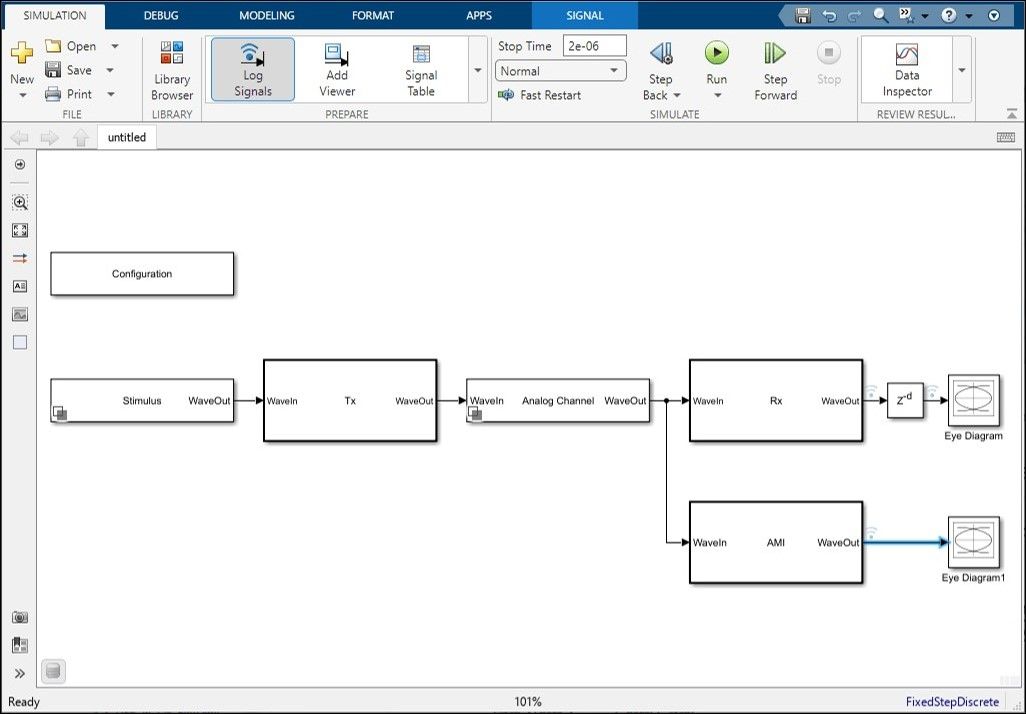
Correlation between a SerDes Rx model and AMI model in SerDes Toolbox.
Compliance Testing of SerDes Designs
Ensuring that SerDes designs meet industry standards guarantees compatibility, reliability, and performance across different systems and platforms, facilitating smoother integration and wider acceptance in the SerDes market. SerDes Toolbox and Signal Integrity Toolbox feature various kits for industry-standard compliance testing. SerDes Toolbox includes capabilities to test and verify that designs meet the specifications of PCIe, USB, Ethernet, and other standards. This built-in compliance testing provides out-of-the-box and ready-to-run setups that streamline the validation process and help engineers ensure their designs will operate correctly in their intended environments.
By leveraging the modeling, simulation, analysis, and testing features in SerDes Toolbox and additional products for mixed-signal design, engineers can address the challenges associated with SerDes design and analysis, accelerate the development cycle, and increase the performance of their high-speed communication systems.
Examples and How To
Examples
How-To and In-Depth Resources
Software Reference
See also: IBIS-AMI, S-parameter, signal integrity, Mixed-Signal Blockset™, RF Toolbox™, mixed-signal systems, wireless and wired communications systems
